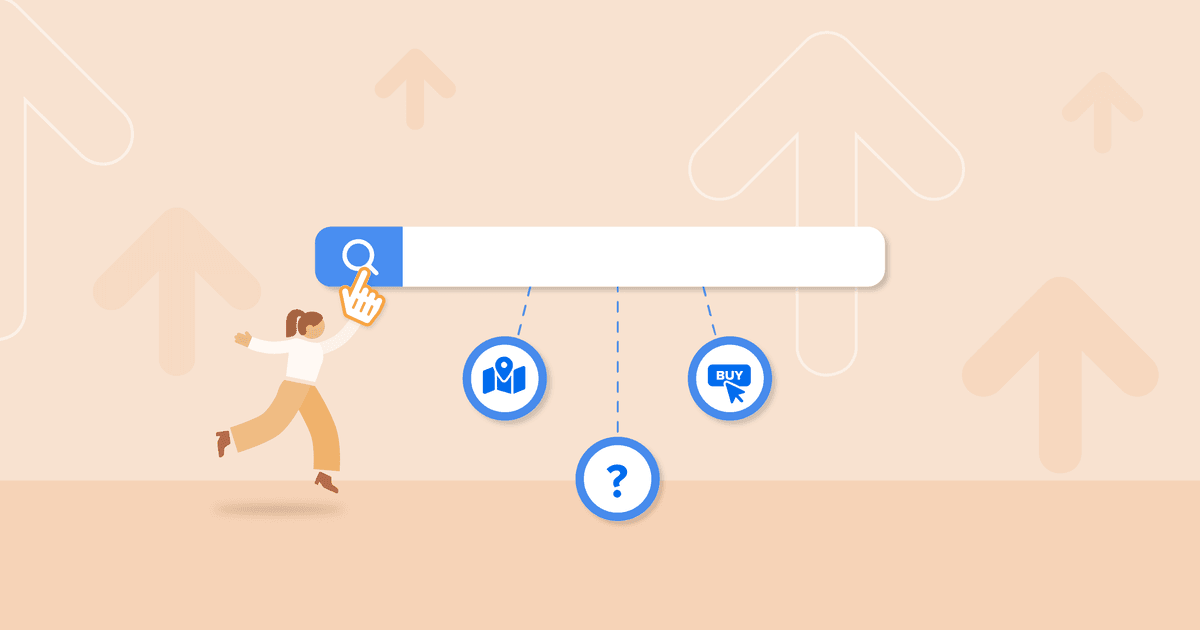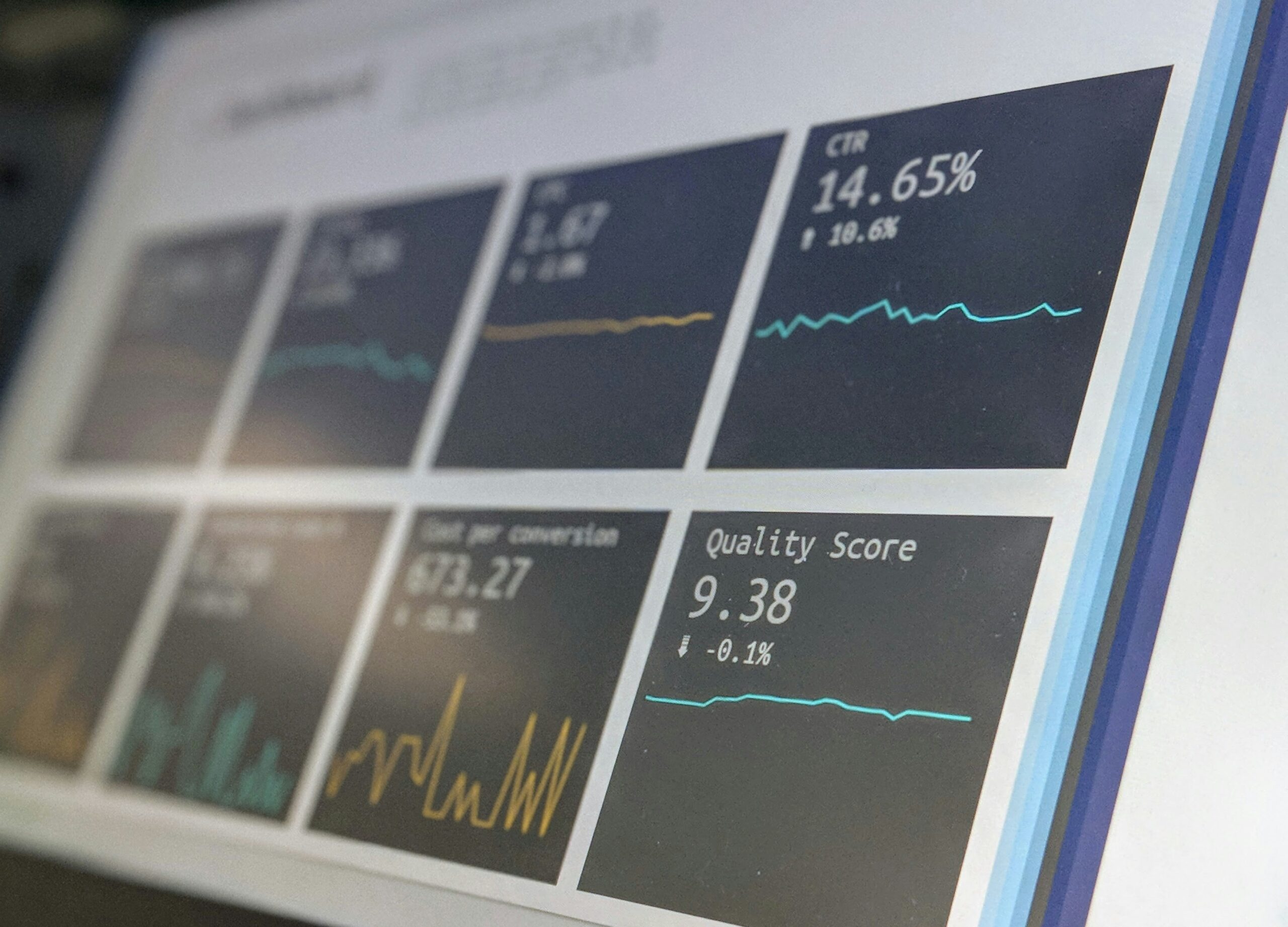Understanding search intent is the cornerstone of a successful SEO strategy. It’s about knowing what keywords your audience is using and grasping why they’re searching for those keywords. This guide will arm you with actionable insights and techniques to decode your users’ search intent, ultimately enhancing user experience and driving your website traffic skyward. Let’s dive into the intriguing world of search intent!

What Is Search Intent?
Search intent, also known as user intent or audience intent, is the primary goal a user has when typing a query into a search engine. Statistics indicate that 50% of search queries are four words or longer, making it vital to understand the intention behind these long-tail keywords.
Why Understanding Search Intent Is Crucial
Grasping the concept of search intent is a critical aspect of SEO strategy. It forms the foundation of how we create content that resonates with our target audience and meets their needs, ultimately driving increased web traffic and higher conversion rates.
Improve SEO And Rankings
Understanding the user’s intent and tailoring your content accordingly improves relevancy signals, which can boost rankings. For instance, pages optimized for the long-tail keyword “how to understand search intent” are more likely to rank highly if they provide a comprehensive guide.
- Increased Organic Traffic: By aligning content with search intent, you’re effectively meeting the needs of your audience. This leads to better engagement metrics like lower bounce rates and higher dwell time, which search engines interpret as signs of quality content, thereby increasing your organic ranking.
- Enhanced Click-Through Rates (CTR): Tailoring your title tags and meta descriptions to match the user’s intent can result in better click-through rates. Higher CTRs often correlate with higher rankings, as it signals to search engines that your content is relevant to the search query.
- Boost in Backlinks: Content that successfully satisfies search intent is more likely to be shared and linked to from other websites. These backlinks are powerful endorsements of your content’s quality, prompting search engines to boost your rankings.
Enhance User Experience
By aligning your content with the user’s search intent, you provide a seamless user journey that meets their needs. Pages that clearly define “informational search intent meaning” or “navigational search intent definition” can help users find the answers they’re looking for more easily.
- Better Navigation and Usability: When content is tailored to search intent, it’s structured in a way that directly answers user queries. This leads to enhanced site navigation and usability, allowing users to find the information they need more quickly and intuitively.
- Increased User Satisfaction: Content that resonates with user intent effectively satisfies their query, leading to a positive user experience. This can increase user retention and encourage repeat visits to your website.
- Personalized User Experiences: Understanding search intent allows for a more personalized user experience. By meeting users’ needs accurately, you can create content that speaks directly to them, making their interactions with your website more meaningful and engaging.
Increase Conversions
Content that matches the user’s search intent increases clickthrough and conversion rates. For example, a page optimized for “best SEO practices” can drive more conversions if it provides actionable recommendations.
- Targeted Call-to-Action (CTA): Understanding search intent allows you to place a perfectly timed and relevant call-to-action that aligns with what the user is looking for. If a user’s search intent is transactional, a well-placed CTA (like ‘buy now’ or ‘book consultation’) can lead to increased conversions.
- Optimized Landing Pages: By aligning the content of a landing page with the user’s search intent, you are more likely to keep the user on the page and lead them toward conversion. For instance, if a user’s intent is informational, a landing page providing valuable, succinct information can prompt the user to explore your services further, leading to conversion.
- Personalized Content and Offers: Search intent can provide insights into a user’s potential interests and needs. This enables businesses to offer personalized content or special deals that cater to those specific needs, thereby increasing the likelihood of conversion.

Types Of Search Intent
Understanding the types of search intent and optimizing your content accordingly can improve the user experience, increase organic traffic, and ultimately lead to higher conversion rates. Thus, comprehending search intent is a crucial aspect of a successful SEO strategy.
Informational
Users with informational intent are seeking knowledge or conducting research. Keywords like “who”, “what”, “when”, and “how” are often indicators of this intent. Informational search intent often revolves around users seeking to learn more about a particular topic, person, event, or concept.
For instance, if they type in queries like “What is search intent?” or “How does Bitcoin work?”, their intention is purely informational. They’re not looking to buy anything or navigate to a specific website. They just want answers or information.
On the other hand, some informational intents can be more complex. A search query like “best practices for optimizing website speed” suggests the user is looking to gain detailed information and possibly step-by-step guidance.
As a content creator, it’s important to cater to both simple and complex informational intents.
Navigational
Navigational search intent refers to users looking to reach a specific site or page. Brand and business names are common navigational keywords.
For instance, users typing “Facebook login” or “Nike shoes online store” into the search bar are showcasing navigational intent. They have a clear destination in mind and are using the search engine as a means to get there. For businesses, it’s advantageous to ensure your website and its pages are easily discoverable and navigable, creating a seamless journey for users with navigational intent.
Transactional
Users who are ready to make a purchase or perform an online activity exhibit transactional intent. Keywords indicative of transactional intent may include “buy,” “order,” “price,” or “coupon.”
Brand-specific searches like “Apple iPhone 12 Pro Max price” or “buy Samsung Galaxy S21 Ultra online” represent transactional intent. As a marketer, your job is to facilitate the transaction by providing a seamless, easy-to-navigate purchasing process and relevant product information.
Commercial Investigation
A commercial investigation is a subset of informational intent but with a commercial angle. Here, users are looking to compare products, read reviews, or find the best deals before making a purchase.
Searches like “best SEO tools 2022” or “iPhone vs. Samsung” reflect this intent. To cater to these users, ensure your content provides comprehensive, unbiased comparisons, detailed reviews, and information about the best deals and offers.

Identifying Search Intent Signals
Search Intent Signals refer to the clues that users provide through their search queries, indicating their specific needs or objectives. These signals can range from the keywords and phrases they use to the format of their queries. It is crucial to learn how these signals can be identified and interpreted, the role of machine learning in refining this process, and the importance of continuously adjusting your SEO strategies based on evolving user search patterns.
Keyword Research
Keyword research plays a pivotal role in helping a business identify a user’s search intent signals. It involves analyzing the specific keywords and phrases that users input into search engines to find information or satisfy a certain need. This insight can reveal a lot about what users are seeking and how they are expressing that need.
For example, a user searching for “how to fix a leaky faucet” indicates informational intent, while “buy a new faucet online” shows transactional intent. By identifying these keyword patterns, businesses can optimize their content to meet user intent, creating resources that answer their queries, solve their problems, or fulfill their wants.
Moreover, long-tail keywords (phrases that are typically three to five words long) can offer even more specific insights into user intent. They are less common and less competitive, but they can indicate a strong intent, like a readiness to buy a certain product or look for a specific piece of information. By analyzing these long-tail keywords, businesses can uncover niche opportunities to provide highly targeted, personalized user experiences, ultimately driving engagement and conversions.
In addition, keyword research tools can provide data about the popularity and competitiveness of certain keywords, further guiding a business’s content strategy to align with user intent. This strategic use of keyword research serves as the foundation for a successful SEO strategy, leading to increased visibility, more organic traffic, and, ultimately, higher conversion rates.
Mind Your Business Newsletter
Business news shouldn’t put you to sleep. Each week, we deliver the stories you actually need to know—served with a fresh, lively twist that keeps you on your toes. Stay informed, stay relevant, and see how industry insights can propel your bottom line.
Subscribe to Mind Your Business
Clickstream Analysis
Clickstream Analysis refers to the process of collecting, analyzing, and reporting aggregate data about which pages a website visitor visits and in what order. This can be a powerful tool in discerning a user’s search intent. By tracking the sequence of clicks a user makes – their clickstream – businesses can gain insights into the user’s behavior and needs.
For instance, if a user navigates from a blog post about SEO best practices to an SEO tool’s product page, it could indicate a transition from informational intent to transactional intent. Similarly, if a user hovers over a product for a while before clicking on the reviews or comparison section, it might suggest commercial investigation intent.
By analyzing these clickstream patterns, businesses can tailor their content and site navigation to better meet the needs and expectations of their users, enhancing user experience and ultimately driving conversions. This data can also be used to segment users based on their intent, allowing for more personalized marketing strategies.
Query Refinement Analysis
Query Refinement Analysis involves observing how users modify or refine their search queries when their initial search doesn’t yield the desired results. This analysis can provide significant insights into a user’s search intent.
For example, if a user initially searches for “laptop”, but then refines it to “best gaming laptops under $1000”, it indicates a shift from broad informational intent to a more specific commercial investigation intent. Businesses can leverage this information to anticipate the needs of their users and adapt their content accordingly.
By offering precise, comprehensive information that aligns with refined search queries, businesses can increase their site’s relevancy, improve the user experience, and bolster their SEO efforts.

Optimizing Content For Each Intent Type
Understanding user intent is only one part of the equation. The next critical step is to optimize your content in alignment with the identified intent, thereby meeting users’ needs while boosting your website’s visibility and relevancy. Let’s delve into how to tailor your content for each intent type.
Informational Content Guidelines
Using search intent can significantly enhance the development and optimization of informational content guidelines. By understanding the informational intent behind a user’s search query, content creators can tailor their material to answer questions directly and provide relevant insights.
This can be achieved by incorporating keywords that reflect the user’s search, thereby improving the content’s visibility and ranking. Moreover, search intent can reveal the depth of information a user seeks, prompting content creators to adjust their content’s complexity accordingly.
Precise alignment of content with the user’s informational intent not only enhances user satisfaction but also increases the likelihood of return visits and user engagement, ultimately contributing to a more effective SEO strategy.
Navigational Content Guidelines
By understanding search intent in the context of navigation, website owners can design their site architecture and navigation menus in a way that aligns with user expectations. If users commonly use navigational search queries to find specific pages on your site, ensure that these pages are easy to find and well-linked in your site’s navigation.
By analyzing how users refine their search queries, you could identify potential gaps in your site’s navigation and adjust accordingly. For example, if users often search for a specific product category that is not currently highlighted in your navigation menu, you may want to make it more prominent.
By tailoring navigation to search intent, you create a more user-friendly site that caters to your visitors’ needs and preferences, leading to enhanced user experience and increased user engagement.
Transactional Content Guidelines
Understanding this intent can help you optimize your transactional content. It allows you to create a straightforward and efficient path to conversion. For example, if a user searches for “buy organic coffee beans online”, your page should ideally lead them directly to a shopping page for organic coffee beans.
By aligning your site’s content and structure with transactional search intent, you can minimize obstacles between the user and their desired action, creating a smoother user experience that boosts conversions. Furthermore, by incorporating transaction-oriented keywords, you can improve your site’s visibility in relevant searches, leading to increased traffic and potential for sales.

Frequently Asked Questions About Search Intent
Why is understanding search intent important?
Understanding search intent is crucial because it helps businesses align their content with what users are actively seeking. By doing so, businesses can enhance user engagement, increase their site’s relevancy in search engine results, and ultimately drive more conversions.
How can I identify search intent?
Identifying search intent can be achieved through methods such as keyword research, clickstream analysis, and query refinement analysis. These methods help decipher the needs or objectives that users express through their search queries.
How does search intent affect SEO?
Search intent directly impacts SEO as search engines prioritize the relevance of content. When businesses tailor their content to meet the identified search intent, they improve their chances of ranking higher in search results, which can lead to increased organic traffic and visibility.
Can search intent influence conversion rates?
Yes, search intent can significantly influence conversion rates. By understanding and catering to search intent, businesses can create more targeted and relevant content or offers, leading to better user engagement and higher conversion chances.
What are some methods for optimizing content based on search intent?
Businesses should aim to provide comprehensive answers to user questions for informational content. Navigational content should be straightforward and intuitive, guiding users to important sections of the site. Transactional content needs to facilitate the easy completion of intended transactions. These methods, combined with continuous analysis and adjustment based on evolving search patterns, can help optimize content based on search intent.
Conclusion
Understanding search intent is a powerful tool for improving your SEO and user experience, and boosting conversion rates. Remember to continually refine your intent analysis and optimization strategies to stay ahead of the curve.






